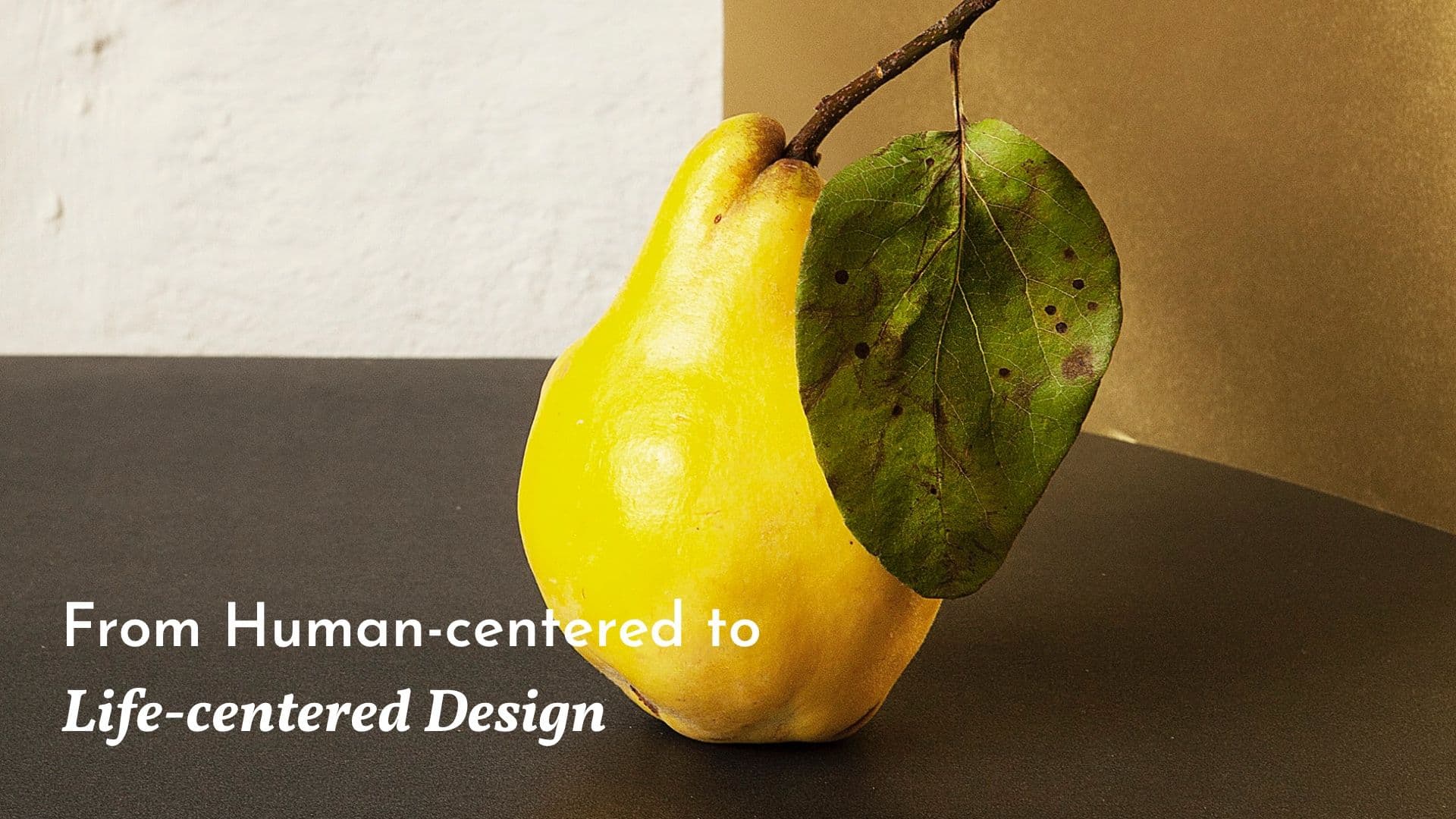
From Human-centered to Life-centered Design
There is one thing bugging me about our work as User Experience or Human-centered Designers. And funnily enough, it is the „Human-centered“ part. "Whaaaaat?“ Yes. But not because I don’t think it is great that we focus on humans while creating products, but because we humans are not the only thing that should be considered. We are not alone on this planet. If we only focus on our pleasure and our experiences and forget about the larger context – which is our world, we might just destroy it along the way. And that is not a great experience, right? I really think that „Designers“ (in the very broad sense I generally like to use this term) have great power. We are problem solvers – creators even. We shape the way products are being used and therefore what impacts they have. And with great power comes great responsibility!
We already shifted from User-centered to Human-centered
We already shifted from merely focusing on the "user“. We moved from designing „User-centered“ to designing „Human-centered“ and acknowledge, that our products impact more than our primary users. But that is not enough! We not only have to think about the direct or indirect impact our work has on us humans, but also about the impact it has on the world these products are being used in and the overall systems we humans are part of.
We not only have to think about the direct or indirect impact our work has on us humans, but also about the impact it has on the world these products are being used in and the overall systems we humans are part of.
Instagram is an example of how a merely user-centered approach might hurt our environment in the long term
I want to give you a concrete example:
We will take Instagram as an example because I think most of us can relate to it. Instagram earns money with ads. It is also a platform, that (amongst others) directs their product development efforts towards enabling a user group very fittingly called „Influencers“. And what those people do (and earn their money with) is influence other users to buy stuff. Stuff they probably don’t need. Now: Even though some of those focus on "influencing people to buy sustainable goods“, I really think that one of the biggest problems our world is suffering from is our huge amount of consumption and the speed we consume (or travel) in – also including sustainable goods. The stuff we buy needs to be produced and disposed of. All of that consumes a lot of energy and produces greenhouse gases. So when these Influencers make people buy more stuff, more stuff gets to be produced. Therefore things can get cheaper over time. Then even more people are able to buy even more stuff and people earn more money (because more stuff gets produced) that they can spend on a lot of stuff they get influenced to buy and don’t need, and so on… Sounds great for the economy, right? Yes – as you can see, I am „just“ a designer and not an economy expert. But there is probably at least some part of this that is correct (at least I hope so).
What does this mean for us as designers of products such as Instagram?
So back to us designers:
While focusing on our primary users (the influencers) and the indirect or secondary users (the companies using the platform to sell stuff) we feel awesome when coming up with intelligent ways to help these influencers with influencing people and these companies with selling stuff. And I know how hard it is in that situation to take a step back and say: "Wait a second. Is it actually GOOD what we are designing here?“
"Is it actually GOOD what we are designing here?“
Yes, we create the outcomes our company aims at and yes we make these users happy. But is it GOOD in a greater sense? In a „life-centered“ sense? When we view our product not only as something serving a specific target audience but as a part of a larger system? When we see the bigger scope and regard a longer period of time? When we regard our users as part of an interdependent system? And sometimes the answer is most certainly „No“. And I think we need to get to these answers and do something about it. But I also think that we can only do that if we move from Human-centered to Life-centered Design. And at the moment this still feels overwhelming. But that doesn't mean we shouldn't move in this direction.
If you want to start today you could listen to this Podcast episode: The Future is Life-Centered - Jane Fulton Suri, IDEO" – Mixed Methods If I remember correctly, this was the first (and only?) time I heard the term "Life-centered Design".
What being a "Life-centered Designer" actually means in our daily practice is something I can't answer you yet. But it is something I definitely want to find out and hope you will join me on that journey!